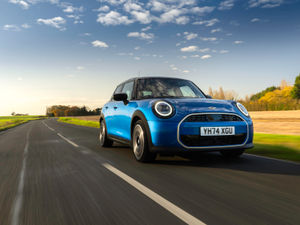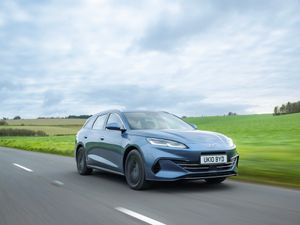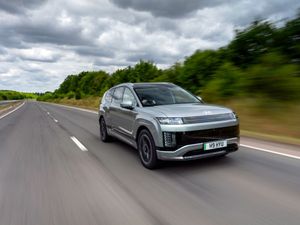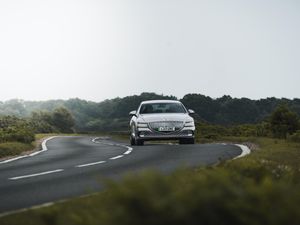What lies beneath is what impresses
There's a new supermini on Britain's roads but you won't have much difficulty in spotting its origins.
But make no mistake: SEAT's new Ibiza may not look too much different on the outside, but underneath it's a very different story.
After all, the sporty shape was originally conceived by a former chief designer for Lamborghini and its sculpted lines remain modern and distinctive. There's an old saying 'if it ain't broke ...'
Instead the company listened to customers and blew its budget for this latest makeover on new, upgraded interiors, a great deal of new technology and the introduction of considerably more efficient engine options, bringing fuel and tax savings for owners.
There's also a new speed sensitive power steering system and much-revised suspension, damper and anti-roll bar settings which have significantly sharpened up handling while also resulting in a smoother, quieter ride. There's a range of customisation options for those who want their car to stand out visually.
Prices start at £10,000, rising to £18,035 which, like for like, still manages to undercut big name rivals which don't have the advantage of offering three body styles - three door couple, five door or sports tourer (estate). There are seven trim levels and ten engine options – seven petrol and three diesel – six of which are completely new.
The Ibiza has, for example, stolen a march on its supermini stablemates from VW and Skoda by offering a full range of one litre petrol engines – both normally aspirated and no less than three which are turbocharged .
So with all that variety, and a new sporting flagship version, the Cupra, coming in a couple of months, the Ibiza has this highly competitive section of the market pretty well covered.
The entry level engine in the cheapest version produces 75ps and 95Nm of torque, drives smoothly and feels a little more peppy on the road than its 14.3 second 0 to 62mph time suggests. Official average fuel consumption at 54.4mpg wouldn't be out of place with many a smaller, lighter city car.
But the same engine in the turbocharged Ecomotive version is rated at 95ps, with 160Nm of torque which cuts nearly four seconds off the 0 to 62mph sprint time and yet its official fuel average is a diesel-like 68,9mpg and lower CO2 emissions of 94g/km.
The top specification FR version gets even more power, 110ps and a hefty 200Nm of torque, but still with an official fuel average of more than 64mpg and a low 102g/km.
The FR, which costs from £15,690 in the three-door model, is also unusual for a 1.0 litre car in that it is available with the proven DSG dual clutch automatic transmission. Quicker and soother than even a manual gearbox, it also has the option of manual control of the six ratios via paddles behind the steering wheel.
With a 0 to 62mph sprint time of 9.3 seconds, it is remarkably quick for a 1.0 litre car and particularly smooth, thanks to its combination of torque and the DSG transmission.
It also gives the car a relaxed, 'grown up' feel, which is a characteristic of the new Ibiza across the board. It isn't only the engine, as the complete retuning of the suspension and damping means a more compliant and quieter ride with less jarring over bumpy B-roads.
That's an impression reinforced by the new cabin – based on the Ibiza's big brother, the Leon – with new soft touch materials and a multi-function colour touchscreen in the centre of the dash.
In fact, there's even a new 'Connect' trim level, which comes with a larger, 6.5 inch screen for controlling audio, communications and satnav, while having full inter-connectivity with a smartphone's functions (one is even supplied as part of the price).
Other petrol engine options include 1.2 litre units with 90 and 110Ps, a 1.4TSI with 150Ps of power and 250Nm of torque.
All three diesel engines are 1.4 litres, with outputs of 75, 90 (available with the DSG tranmission) and 110PS. The 75Ps version is fitted to the Ecomotive version, with official average fuel consumption of more than 83mpg and a CO2 rating now down to 88g/km: well below the current 100g/km free VED benchmark.
The Ecomotive has a very respectable 210Nm of torque, making it very driveable with plenty of pulling power at low revs. It is also significantly quieter than the engine it replaces.
The entry-level E model comes with a centre touch screen media system, four airbags, hill hold control,a tyre monitoring system, stability control and emergency brake assist, a folding rear bench seat, electric front windows, Next up the S A/C adds air conditioning along with electric adjustable and heated door mirrors, an upgraded audio and hands-free phone system, a split/fold rear seat and remote audio and phone controls on the steering wheel.
Further up the range, you add features such as alloy wheels, a larger touch screen with an improved range of functions, LED running lights, front fog lights with cornering function,cruise control, parking sensors, satnav, and a driver tiredness warning.
The FR is the top specification model, with the addition of sporty trim.
The new Ibiza has to hold its own in a crowded and competitive area of the market, but SEAT has hit the ground running with a wide range of engine, body styles Its competitive pricing and relatively low running costs add to the appeal. All the new engines meet the latest EU6 emissions standards (with low CO2 ratings of between 88 and 120g/km) and insurance ratings range from 8E to 18E (out of 50).
And while its looks may not have changed much (colour pack options excluded) SEAT has added a raft of new technology and a more grown-up feel to the car, with significant improvements in refinement.
For many of us price is the deciding factor. But given a choice the FR, with one-litre turbo engine, DSG transmission and a combination of 64mpg and sub 10 seconds sprint time is a pretty remarkable machine even in the world of superminis.
By John Griffiths





